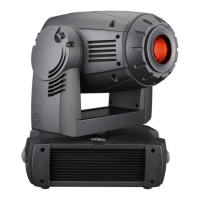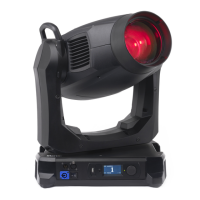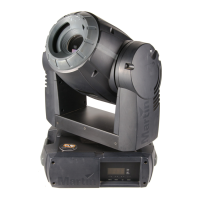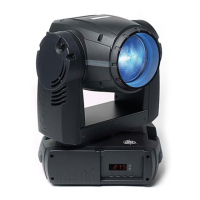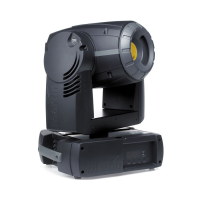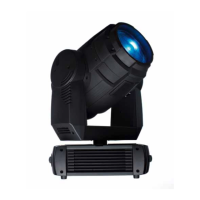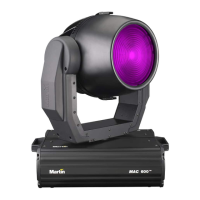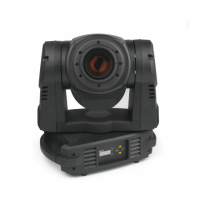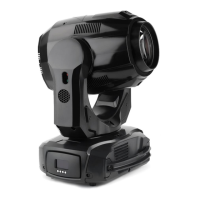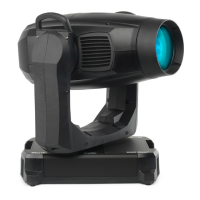Control panel 15
Tailoring performance
Movement
The MAC 2000 Profile provides six options for optimizing movement for different applications.
• The protocol setting (PSET)setting selects 8-bit or finer 16-bit control of pan, tilt, and gobo index.
• The pan and tilt invert (
PATI)menu swaps and/or inverts pan and tilt.
• The pan/tilt speed (
PTSP) menu provides 3 settings: FAST, NORM, and SLOW. NORM is best for most
applications.
FAST provides better performance in applications where speed is most important. SLOW provides the
smoothest movement and is best in long-throw applications with slow movements through narrow angles.
• The studio mode (
STUd) setting optimizes all effects besides pan and tilt for speed or quietness.
• The shortcuts (
SCUT)setting determines whether the color, gobo, and effect wheels always take the shortest path
between two static positions or oscillate between outer positions.
Tracking Response
The MAC 2000 Profile has a filter algorithm that looks at several position updates in tracking control mode and
calculates the ideal response for smooth movement. Tracking response is adjustable to compensate for variations in
controller performance. In most cases the default settings work well.
If tracking mode movement is not satisfactory there are 2 parameters that can be adjusted. The first is selected under
PERS/TRAC/MOdE. The default, MOd1, is the best choice with controllers that calculate intermediate
positions at a steady rate. Begin by selecting the alternative,
MOd2, which is better if the intermediate positions stray
significantly from the line of travel.
The second parameter is the number of position updates used to calculate speed. The level is adjustable between 1 and
10 under
PERS/TRAC/CAL. Increasing the number of samples increases the distance over which speed is
calculated, making movement smoother but less responsive to sudden changes. Experiment for best results.
Display
The display intensity (dINT) setting controls display brightness. The display on/off setting (dISP) determines
whether the display remains on or extinguishes two minutes after the last key-press. To flip the display, press [Up] and
[Down] simultaneously.
Lamp
There are two settings that modify lamp control: Automatic Lamp On (ALON) and DMX Lamp Off (DLoF).
When ALON is off, the lamp remains off until a “lamp on” command is received from the controller. When ALON is
on, the lamp strikes automatically after the fixture is powered on. When
ALON is set to DMX, the lamp strikes
automatically when the fixture receives DMX data, and it extinguishes 15 minutes after DMX data is lost.
When
ALON is set to either ON or DMX, the automatic lamp strike timing is staggered to prevent all lamps from
striking at once. The delay is determined by the fixture address.
If striking lamps from the controller, note that striking many lamps at once may cause a voltage drop large enough to
prevent lamps from striking or trip the main circuit breaker. Avoid this by programming a “lamp on” sequence that
strikes lamps one at a time at 5 second intervals.
Power to the lamp can be turned off from the controller if DMX Lamp Off (
dLOF) is on. If dLOF is off, a DMX
lamp off command is executed only if position 7 is selected on the color wheel and gobo 5 is selected on both gobo
wheels. Be careful: with the magnetic ballast model, it is not possible to restrike the lamp until it has cooled for a few
minutes. (The electronic ballast model provides hot restrike.)
DMX reset
The fixture can be reset from the controller if DMX reset (PERS/dRES) is ON. If DMX reset is OFF, the reset
command can only be executed if position 7 is selected on the color wheel and gobo 5 is selected on both gobo wheels.

